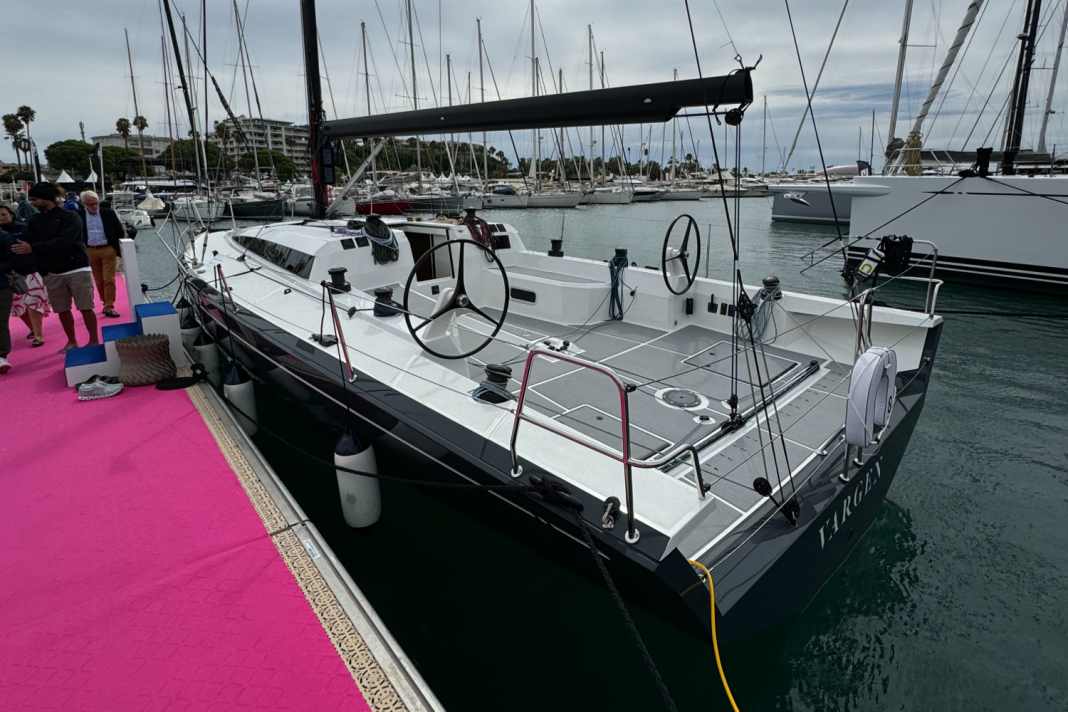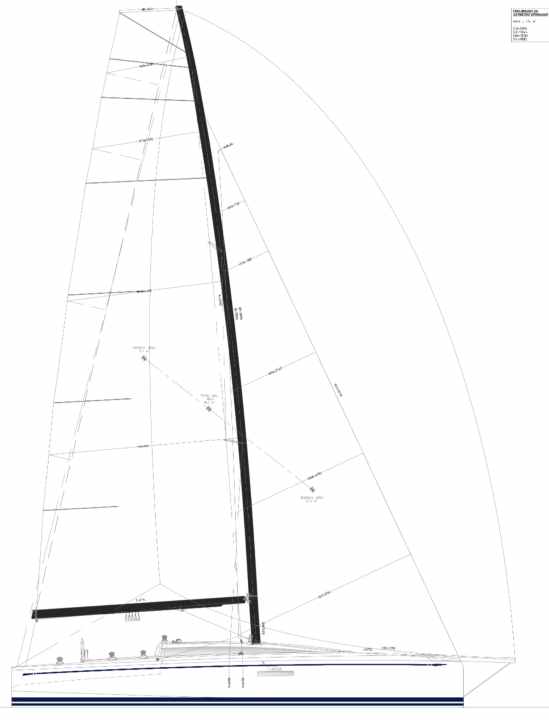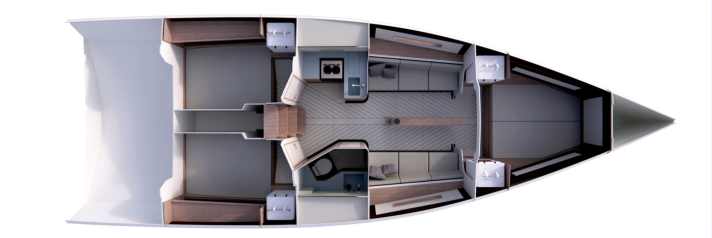





Nautor Swan divides its model portfolio into two lines, ClubSwan and Swan. Regatta and fast cruising. The division into two lines began when Leonardo Ferragamo took over the Finnish shipyard in 1999 and established strong standardised classes in 2002 with the Swan 45 and later the ClubSwan 42. The ClubSwan 36 and the ClubSwan 80 deepened the focus and differentiated the sports division more strongly from the classic swans. With the ClubSwan 43, Nautor has once again dared to combine the two lines. This caused quite a stir in the run-up to the launch. Initially, the CS 43 was to be built in the United Kingdom by a partner shipyard in 41 feet, but then the ClubSwan project grew to 43 feet and came to the headquarters in Pietarsaari, Finland. This showed how important the project is for Nautor and how serious they are about the ORC orientation. The 14.59 metre long ClubSwan 43 now ranks between ORC classes A and B, leaving the option of either/or registration.
Tour of the new Clubswan 43
Juan K had a wide range of duties to fulfil
Nevertheless, the requirement for cruising-friendly sailing was not lost and resulted in a broadly defined specification, which Juan Kouyoumdjian implemented constructively. The Argentinian created a modern, but not overly aggressive crack, which differs from the one presented in 2016 for the shipyard's 50th anniversary. ClubSwan 50 is demarcated: The stem is now straight and merges into a narrower ORC-optimised foredeck without chines. The stern of the CS 43 is wide again, although it is a little narrower at the top, but with the familiar concave hull curve above the chine. Overall, there are far fewer extreme shapes than on the latest Sport Swan, the semi-foiling ClubSwan 36.
"Our aim was to simplify as much as possible," says Federico Michetti on board the first build in Finland. Nautor's sporting director and product manager of the ClubSwan 43 is an eleven-time world champion in various unit classes and demonstrates below deck how the cosy gives way. The cork wall panelling can be removed with Velcro, the ceiling panels with the Fastmount mounting system. Michetti estimates that, together with the upholstery, table (via two screws) and the bed panelling, more than 300 kilograms come off the boat. The standard layout with three cabins, open galley and plenty of storage space shows that the interior is not just an accessory. Lucio Micheletti was also engaged. The Milanese architect, yachtsman and experienced car designer has already modelled the exterior of the large Swans and developed a calm, elegant interior for the CS 43 that does without a lot of leather. Additional cosiness is provided by the comfort package, which includes diesel heating, a fridge-freezer and an on-deck shower.
From Race to Cruise mode in a few simple steps
According to Nautor's idea, the ClubSwan 43 is set off on a family cruise after the regatta. For cruising, a top fitting with boom is then fitted to the Axxon mast made of high modulus carbon. The associated change from backstays with deflectors to backstays and from Fathead- to a smaller mainsail is done without laying the mast, but using a bosun's chair. A shorter bowsprit with anchor gallows also saves sail area. A hatch behind the head section of the bow berth makes it easier to replace the trunk and install an anchor winch (connections available in the forepeak). The V-berth was open in construction number one, but is also offered in a closed version.
The transformation requires a little more effort if you have previously taken part in ORC races instead of a one-design regatta. A crane appointment would have to be arranged to access the bomb of the L-keel. A composite flap can be opened on the top of the keel to insert a series of lead cylinders to counteract the lack of crew weight on the edge. The background: ORC favours designs that manage with little ballast at the end of the keel. The keel is removed using two easily accessible nuts in front of the rear table leg. The very low, pre-balanced single rudder and the steering system are easily accessible via two hatches. The cockpit runs out in a wide V and has shortened thwarts for more clearance at the mainsheet winch. In cruising use, a carbon fibre table is intended to enhance the cockpit.
ClubSwan 43: clever solutions for more ergonomics and sailing fun
The wheels are positioned right on the outside and are offset five degrees forwards - for the best view of the bow and more knee room, especially when steering from a seated position. The 174 square metre gennaker is recovered via the fore hatch and pulled through the saloon to the rear, similar to the ClubSwan 80. The ClubSwan 43 comes from the shipyard with rod shrouds, four Harken winches and halyard blocks for the mainsail and headsail. Twelve knots of true wind should be enough for her to leave her own wave system; the optimum heeling angle is around 20 degrees.
The fins laminate the hull and deck using a vacuum infusion process from an epoxy-glass fibre sandwich with unidirectional carbon fibre reinforcements. In race mode, the CS 43 weighs 7.5 tonnes on the crane; an empty ClubSwan 50 weighs only 700 kilograms more. However, Nautor has opted for carbon fibre sprint laminate for the 28-fold big sister and is charging 1.4 million euros. Federico Michetti assumes that 20 ClubSwan 43s will be afloat in five years; with luck, four will be competing in the Rolex Swan Cup off Sardinia in mid-September. The ready-to-sail price for the CS 43, which has been washed in all waters, is 820,000 euros.
Technical data ClubSwan 43
- Total length: 14.59 m
- Hull length: 13.10 m
- Width: 4.25 m
- Draught: 2.80 m
- Weight: 7.57 tonnes
- Mainsail: 78 square metres
- Foresail: 48 square metres
- Gennaker: 183 square metres



